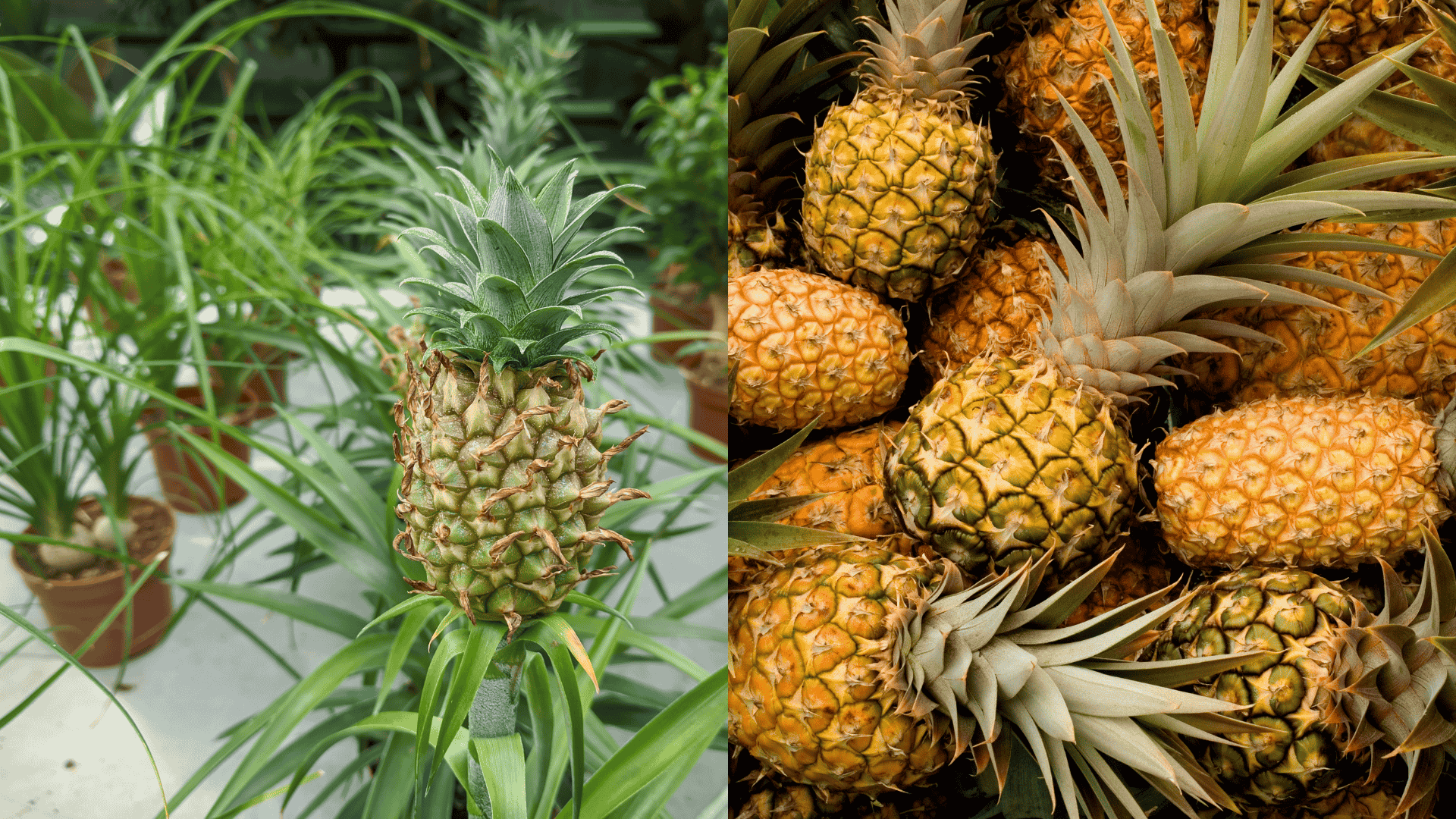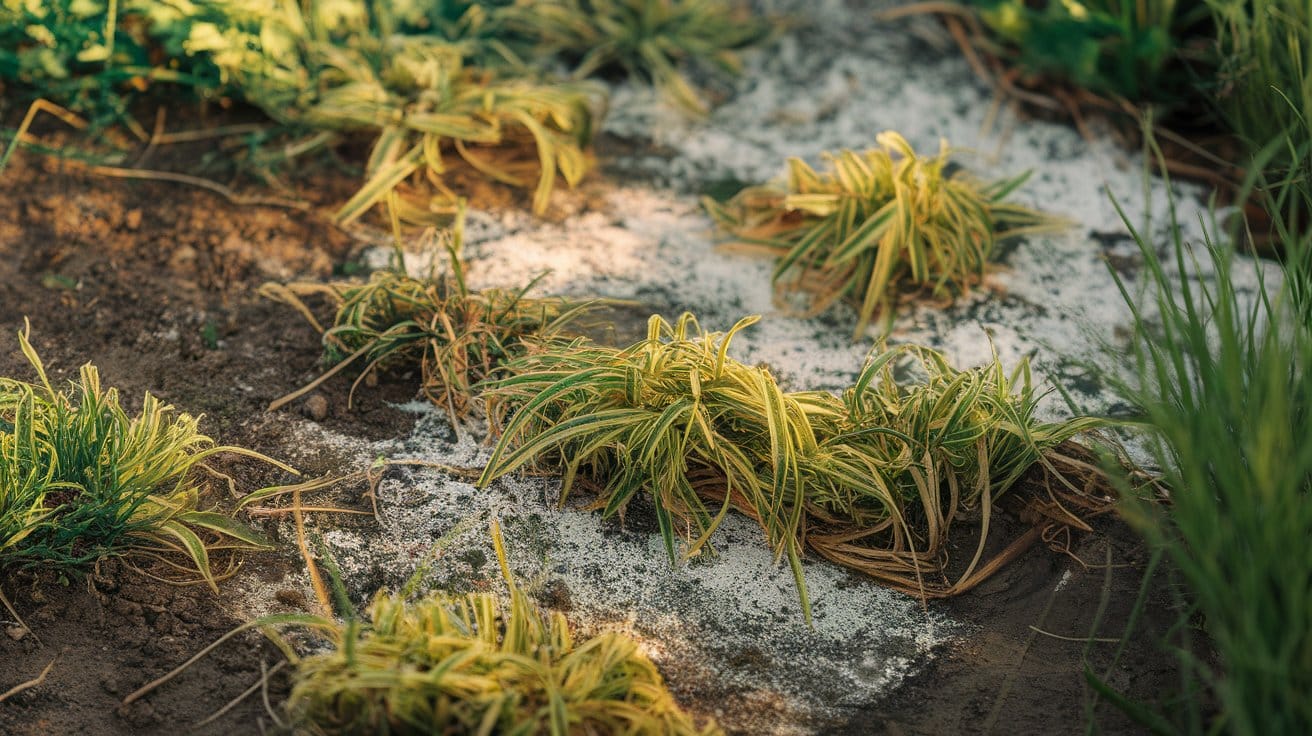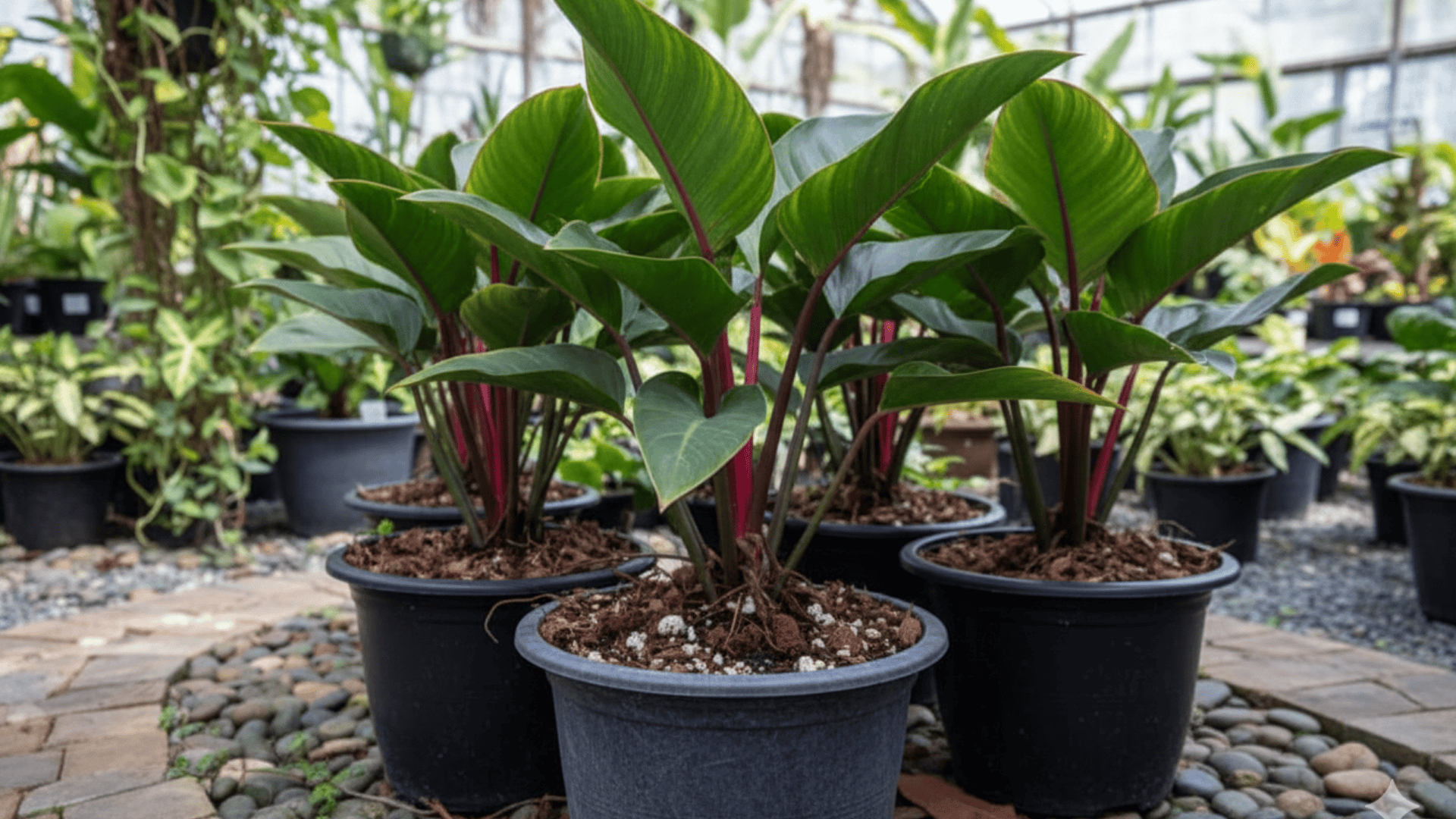Growing pineapples at home might sound tropical and exotic, but it’s more achievable than many think.
With the right conditions and care, a pineapple plant can thrive in gardens, containers, or even indoors near a sunny window.
The process requires time and patience, but the reward is a homegrown fruit that brings freshness straight from plant to plate.
In this article, you’ll learn how long it takes a pineapple to grow, a clear step-by-step process for planting and caring for your plant, and practical tips for overcoming common challenges
Health Benefits of Pineapple
Pineapple is not only sweet and refreshing but also loaded with essential nutrients. It helps your body stay healthy in many ways like:
- Rich in vitamin C, supporting immune health.
- Contains bromelain, which aids digestion and reduces inflammation.
- Promotes healthy skin and collagen production.
- Supports bone strength with manganese.
- May improve eye health with antioxidants.
- Helps reduce cold and sinus inflammation.
- Supports heart health and blood circulation.
- Aids post-workout recovery and muscle repair.
- Contributes to hydration due to its high water content.
- Naturally low in calories and high in fiber for better digestion.
How Long Does It Take a Pineapple to Grow?
A pineapple usually takes about 18 to 24 months to grow from planting to harvest.
This slow pace can surprise new growers, but it’s part of the plant’s natural rhythm.
After the first crop, subsequent pineapples often develop a little faster from the plant’s side shoots, called suckers or slips.
These offsets reuse the mother plant’s root system, which helps them mature quickly.
While the wait can feel long, many gardeners find the reward of cutting their first homegrown pineapple worth the patience.
Growth speed depends on:
- Climate: Warmth and steady sun encourage faster progress.
- Soil and container size: Healthy, well-draining soil and enough root space support growth.
- Nutrition: Balanced feeding helps the plant stay strong.
Related reads: Easy garden vegetables to grow for quick harvests
Step-by-Step: How to Grow Pineapples?
Growing a pineapple at home is not difficult, but it requires patience and attention to detail.
The process starts with choosing a healthy starter and continues with proper soil, sunlight, and care.
Each stage, from rooting to flowering, has its role in ensuring a strong plant that eventually produces sweet fruit.
Here’s a complete guide to help you succeed:
Step 1: Pick Your Starter

You have three options for starting your pineapple plant:
- Crown (top) from a ripe pineapple – the most accessible option.
- Slips – small plantlets that grow at the fruit base.
- Suckers – offshoots from the mother plant (these fruit the fastest).
When selecting a crown, look for one that’s healthy and green with no signs of rot or disease.
Step 2: Prepare the Crown or Slip
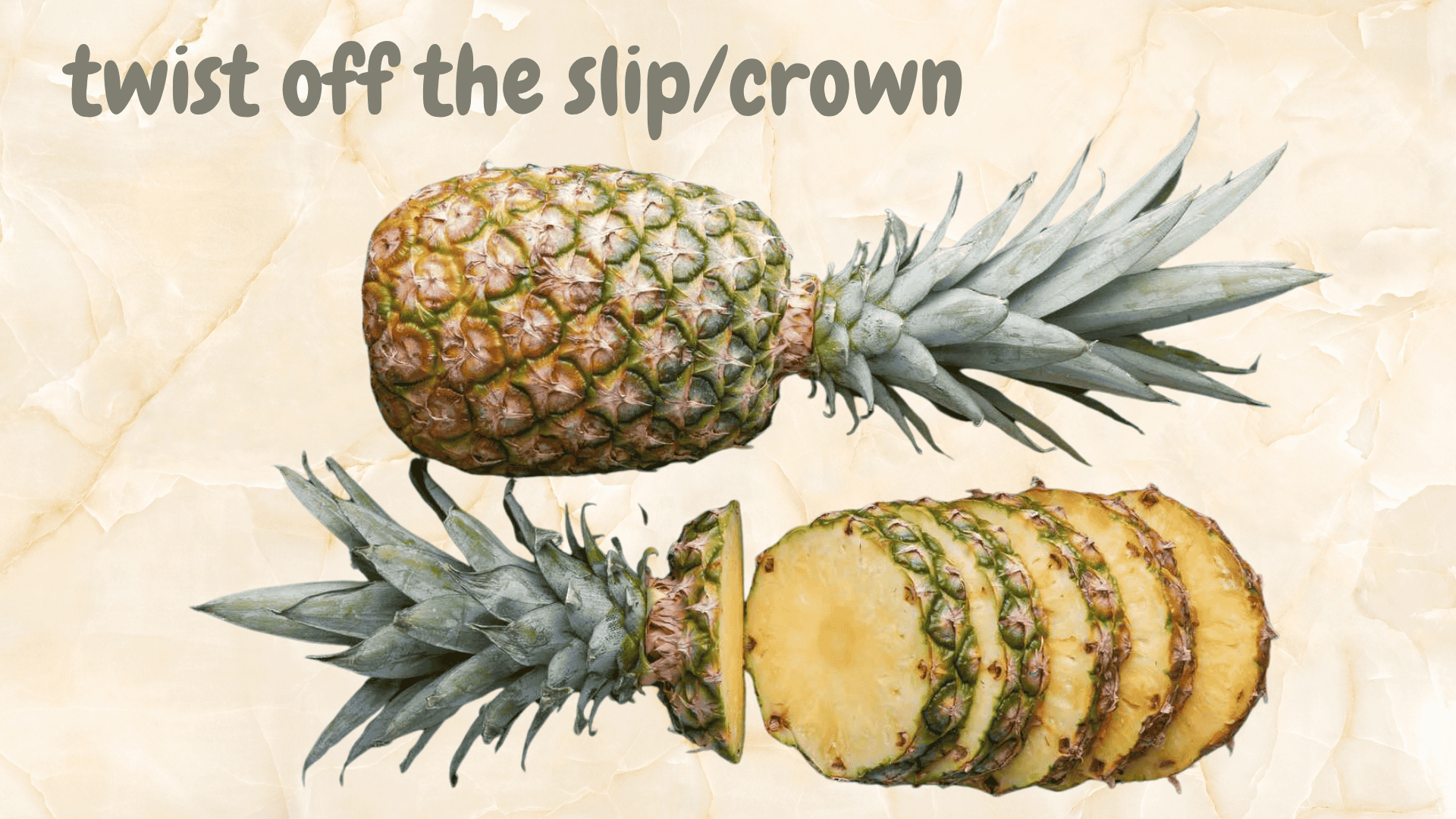
Before planting, you need to prepare your starter properly:
- Twist off the crown from the fruit.
- Peel away 1–2 rows of lower leaves to expose the small root nubs underneath.
- Let it dry for 24–48 hours in a shaded spot.
This drying period allows the cut end to callus over, which significantly reduces the risk of rot when you plant it.
Step 3: Rooting

You can choose to root your crown in water before planting, though it’s not mandatory:
- Place the prepared crown in a container with water touching only the base.
- Change the water every few days to keep it fresh.
- Once roots reach 2–5 cm in length, transfer to soil.
Alternatively, you can plant directly into your growing medium.
Step 4: Soil and Container
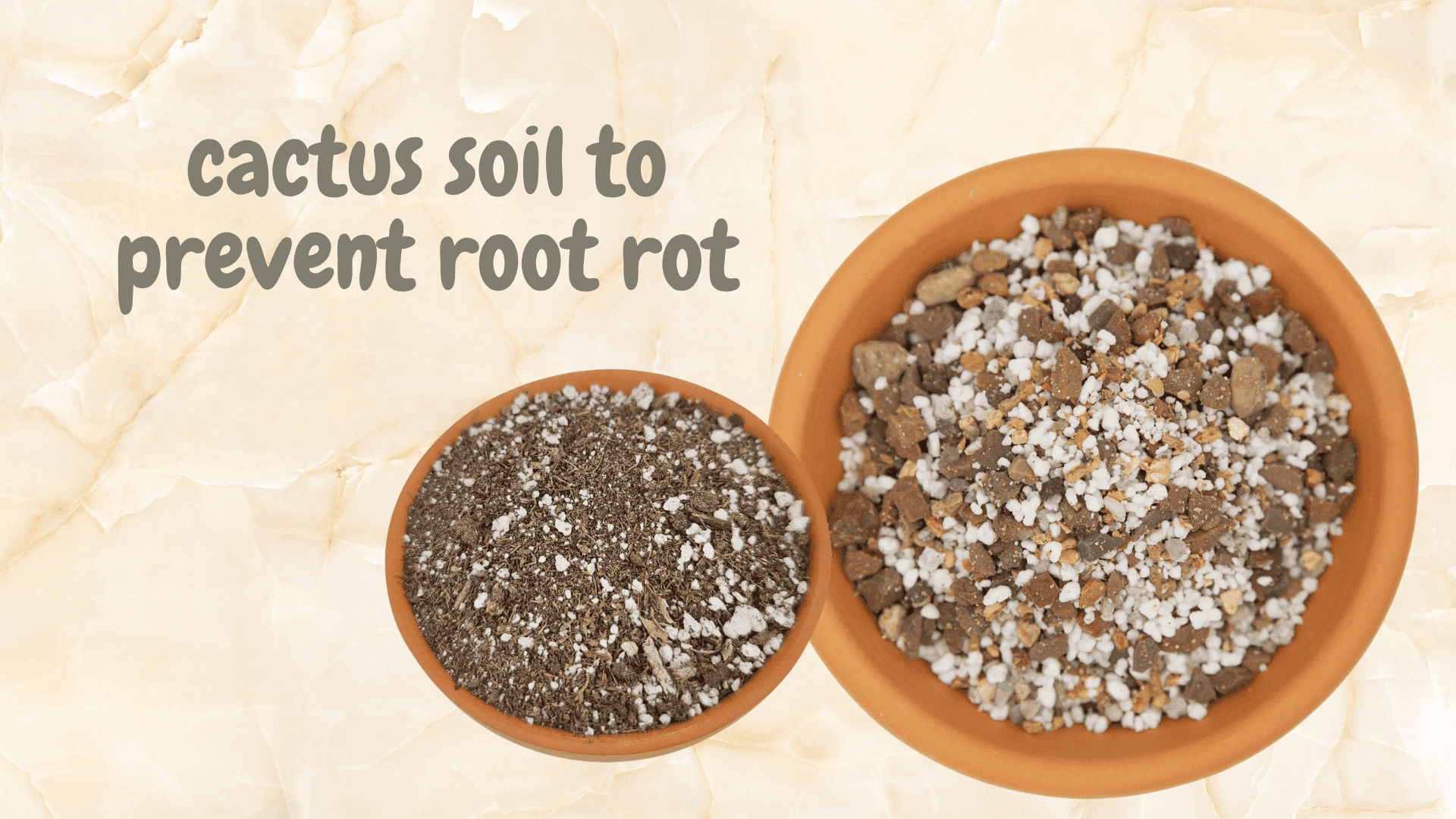
Pineapples need excellent drainage to prevent root rot:
- Use a well-draining mix such as cactus or succulent soil combined with perlite.
- The soil should be slightly acidic.
- Start with a 15–20 cm pot that has drainage holes at the bottom.
Proper drainage is critical – waterlogged soil will kill your plant.
Step 5: Planting
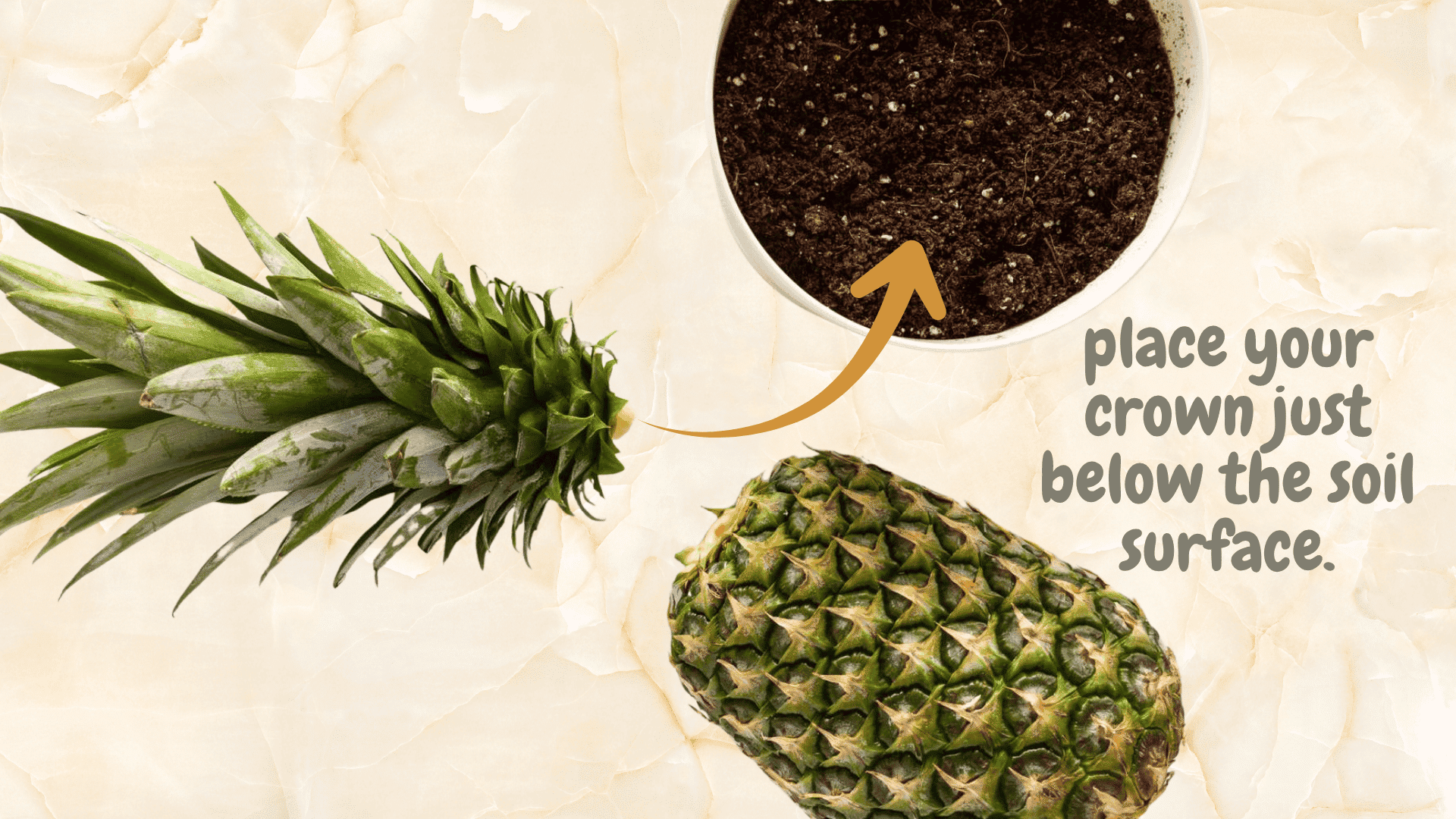
When placing your crown in the pot:
- Set the base just below the soil surface.
- Firm the soil gently around it.
- Keep the central cup (the growing point) above the soil line.
The plant should feel stable but not compressed.
Step 6: Light and Warmth
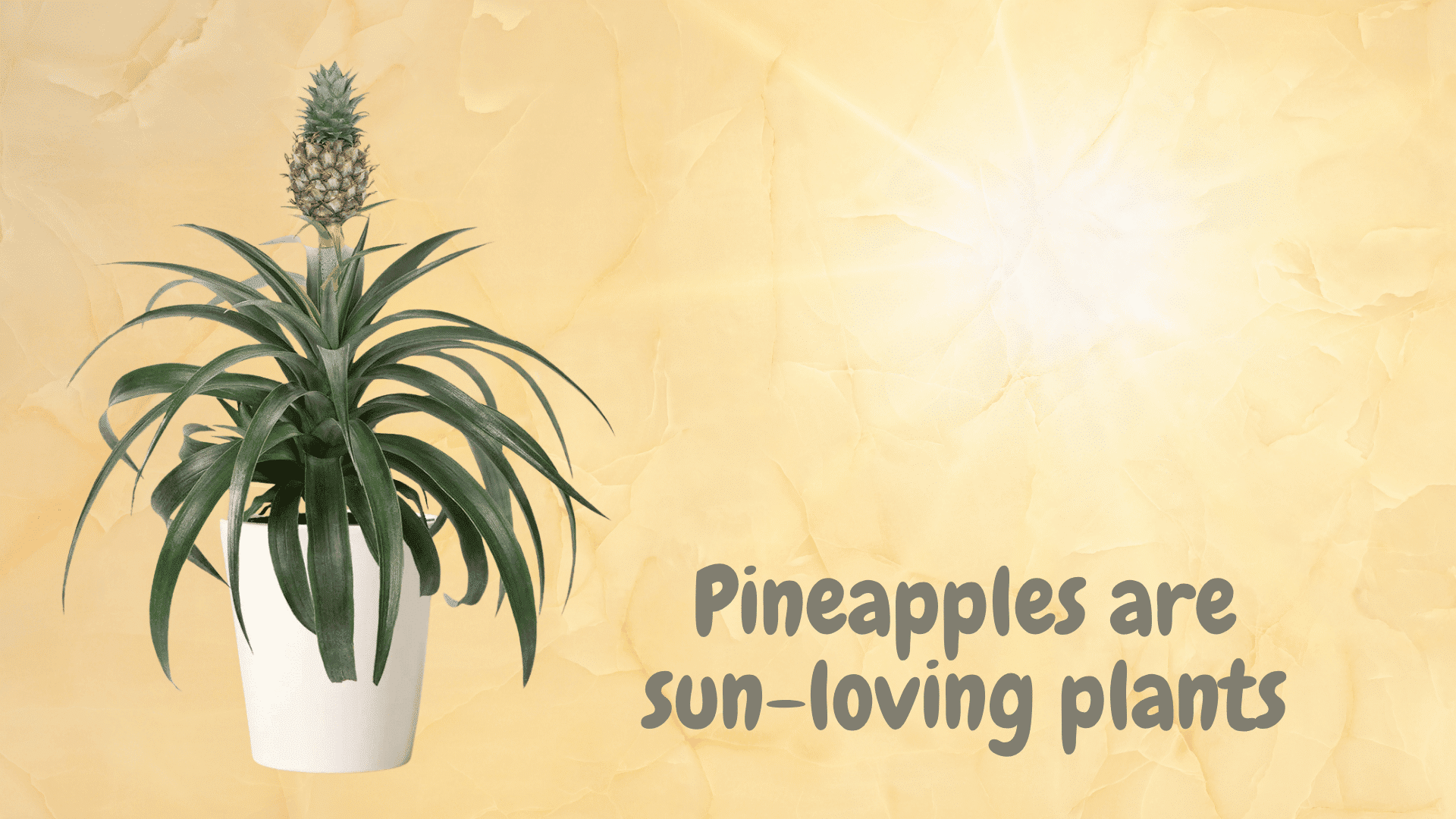
Pineapples are sun-loving plants:
- Provide 6–8 hours of full sun daily.
- Use a bright window indoors or grow lights if natural light is limited.
- Maintain temperatures between 21–32°C for best results.
- Protect from cold drafts and temperatures below 15°C, which slow growth considerably.
Step 7: Watering

Water management is crucial for healthy pineapple plants:
- Water the soil directly, not the crown center.
- Let the top 2–3 cm of soil dry out between waterings.
- Never let the plant sit in soggy soil.
- Light but regular watering works best.
Pineapples are more drought-tolerant than many people realize, so err on the side of less water rather than more.
Step 8: Feeding
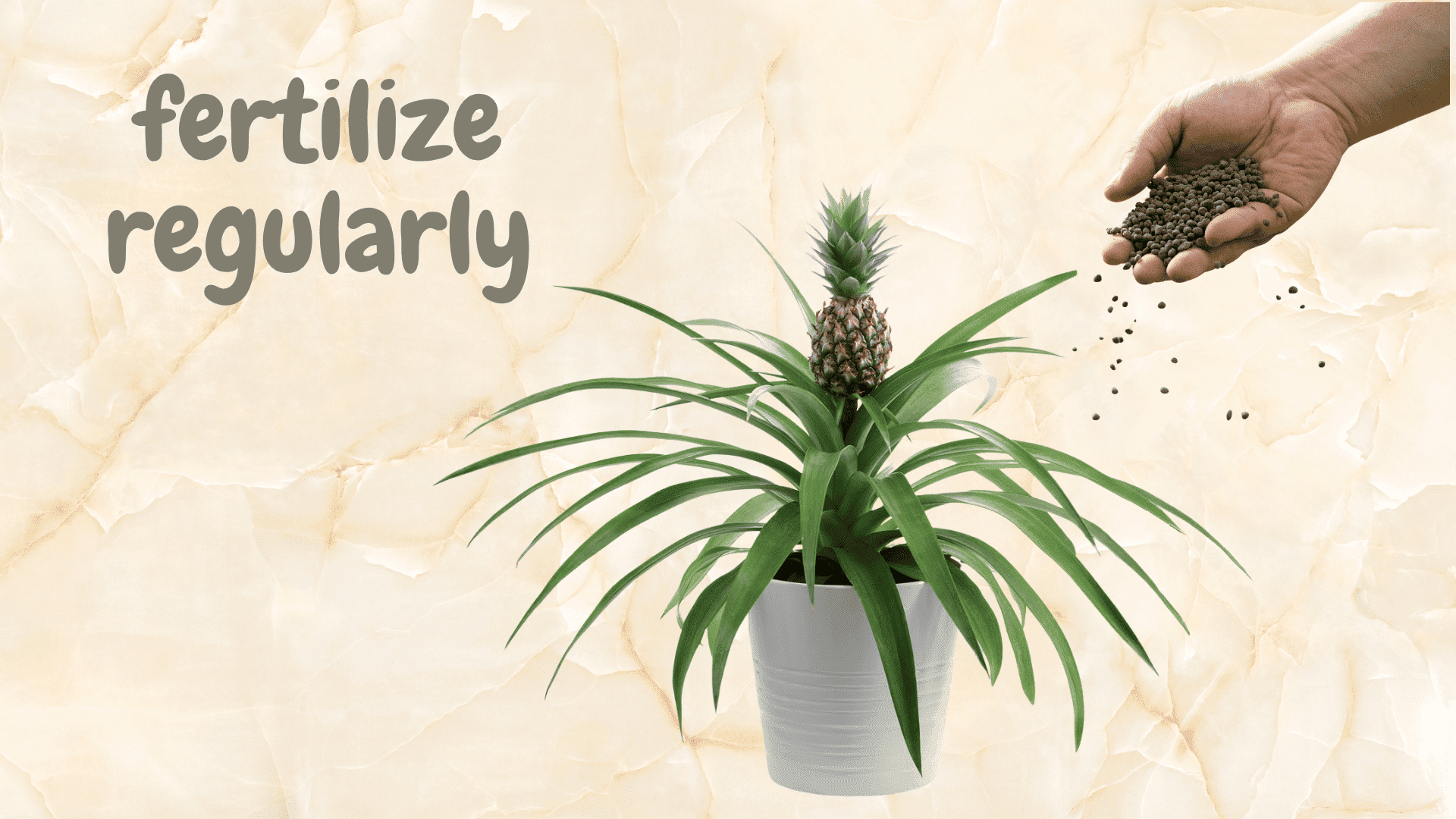
Regular fertilization supports vigorous growth:
- Feed every 4–6 weeks during the active growing season.
- Use a balanced liquid fertilizer diluted to half strength.
- Flush the soil with plain water occasionally to prevent salt buildup.
Overfertilizing can damage roots, so follow the “less is more” principle.
Step 9: Maintenance
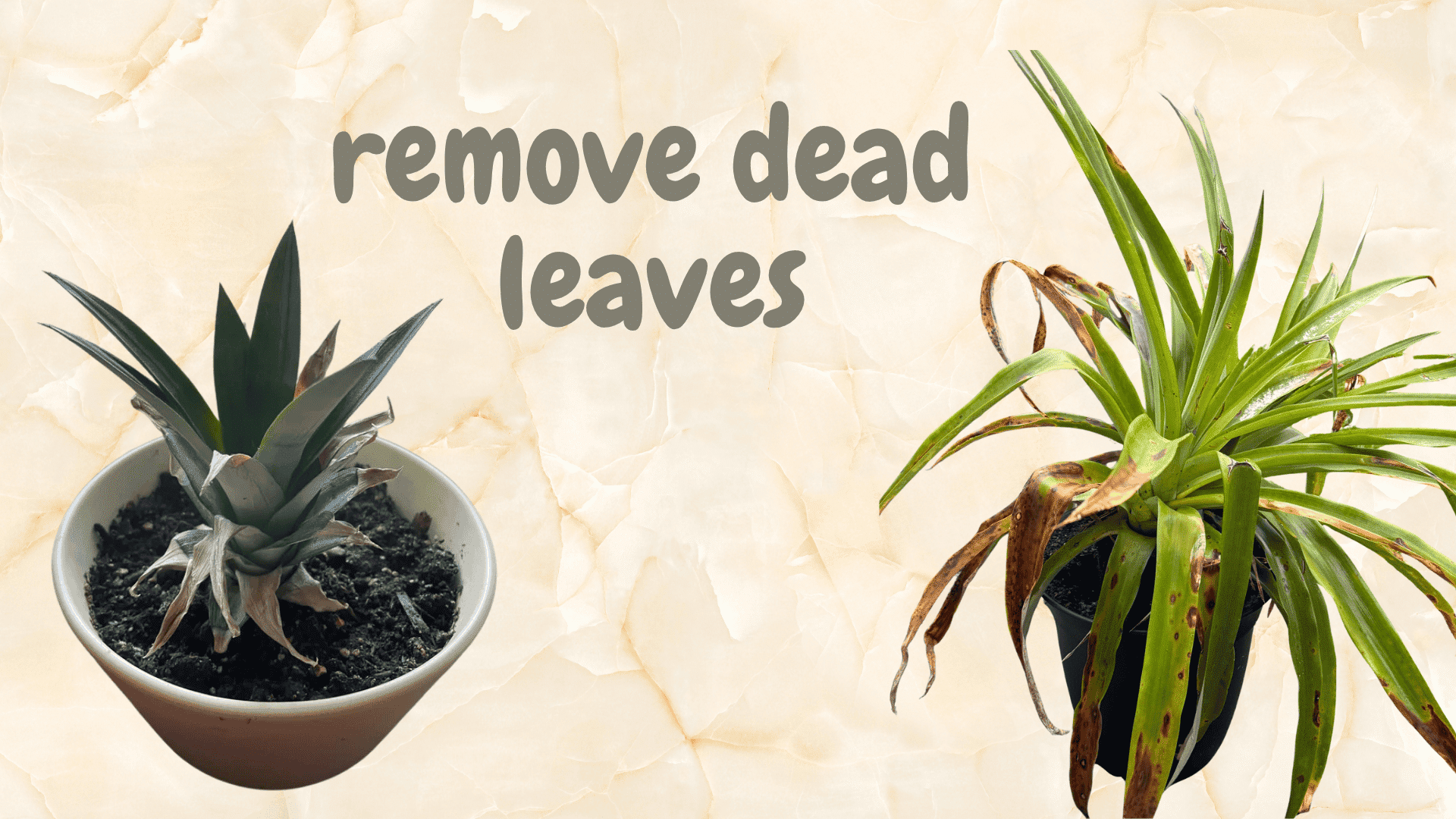
Keep your plant healthy with basic maintenance:
- Remove dead or dying leaves as they appear.
- Apply a light layer of mulch to retain moisture (keep it away from the stem).
- Repot to a 25–30 cm pot once the plant becomes root-bound.
Repotting gives the plant more room to develop a stronger root system, which leads to better fruit production.
Step 10: Flowering and Fruit Set
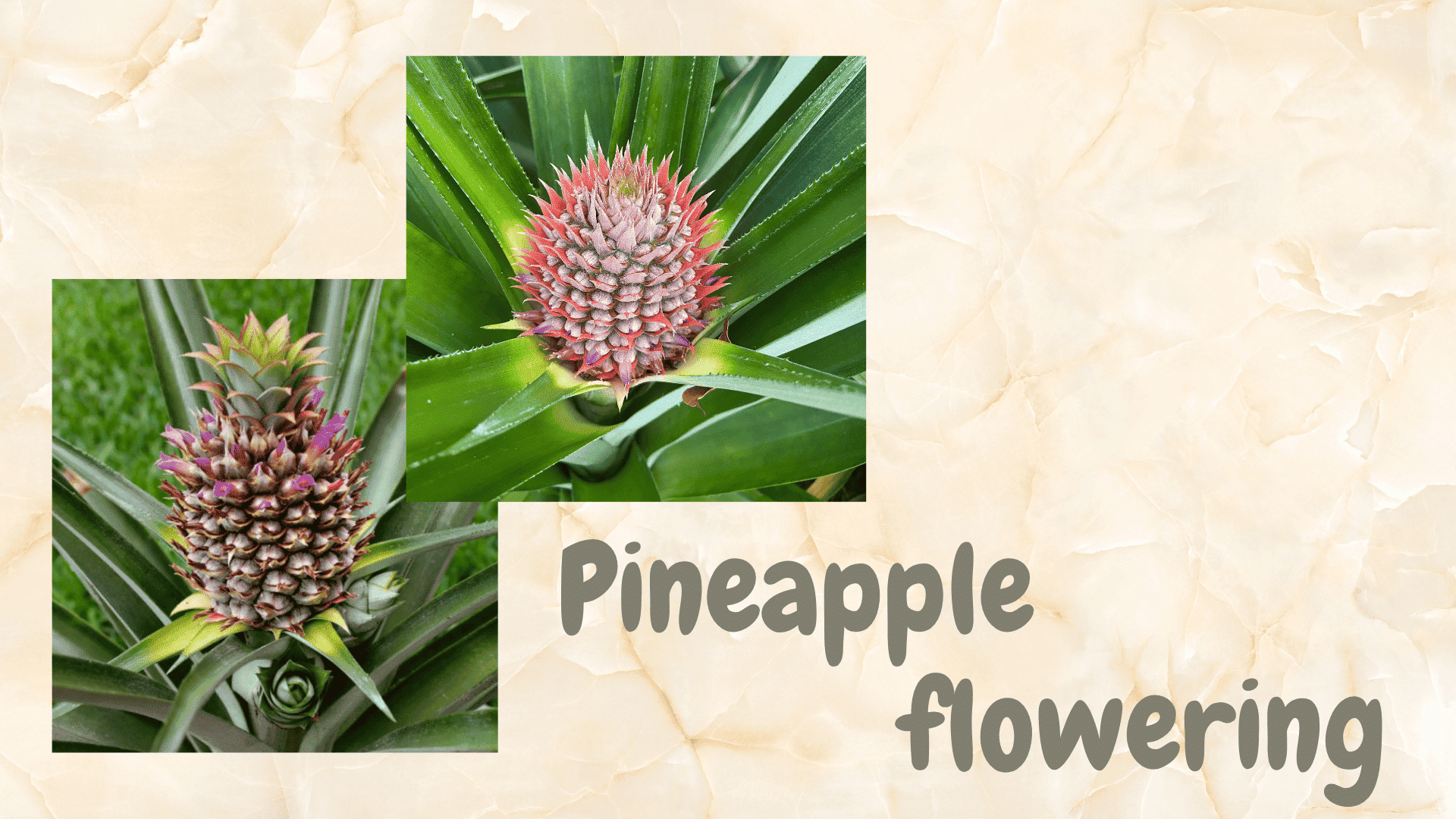
Flowering typically begins 12–18 months after planting.
If your plant is growing vigorously but hasn’t bloomed, you can encourage flowering:
- Place the entire plant in a sealed bag with a ripe apple for 3–5 days.
- The ethylene gas released by the apple can trigger flowering.
- Remove from the bag and resume normal care.
This technique works because pineapples respond to ethylene as a flowering signal.
Step 11: After Bloom

Once flowering occurs:
- A red or purple flower head forms first.
- A small pineapple will develop and swell over the next 5–7 months.
- Support the fruit with a stake if it becomes too heavy for the plant.
Be patient during this phase – the fruit will gradually change color and size.
Also, learn how to grow tomatoes easily at home and take care of tomatoes like an expert.
Common Challenges While Growing Pineapples
Even though pineapples are fairly easy to grow, a few common issues can slow them down.
Here’s how to handle them:
| Challenge | Cause | How to Fix |
|---|---|---|
| Slow growth | Low light, cool temperatures, or poor feeding | Move to a sunnier spot, keep warm, and fertilize regularly. |
| Rot at the base | Overwatering or soggy soil | Use a well-drained mix, water sparingly, and let crowns dry before planting. |
| Pests (mealybugs) | Sap-sucking insects on leaves/stems | Wipe with alcohol-soaked cotton or apply mild insecticidal soap. |
| Weak growth | Not enough direct sun | Provide 6–8 hours of sunlight daily and feed for stronger leaves. |
Most problems stem from lighting, watering, or drainage issues.
Adjust these first before trying other fixes.
Regular monitoring helps you catch issues early when they’re easier to correct.
Remember, pineapples are resilient plants that can recover from minor setbacks with proper care.
Conclusion
Growing pineapples takes 18–24 months and requires patience, but the results are worth it.
With proper warmth, light, and drainage, you can grow this tropical fruit in containers or indoors, even with limited space.
Start with a healthy crown from your next store-bought pineapple and follow the steps outlined in this guide.
Soon you’ll have your own tropical plant producing sweet, homegrown fruit.
Ready to start your pineapple growing experience?
Share your tips, challenges, or questions in the comments below!
Frequently Asked Questions
Can I Grow a Pineapple Plant Entirely Indoors?
Yes, but only indoors or in a greenhouse. Pineapples cannot tolerate frost or temperatures below 15°C. Grow them in containers near a south-facing window or use grow lights for adequate brightness.
How Big Does a Pineapple Plant Get?
One plant produces one main fruit. After harvesting, the plant declines but produces offshoots called suckers or slips. Pot these separately to grow new plants that will each produce their own fruit.
Do Pineapple Plants Need Pruning?
No, pineapples are self-fertile and develop fruit without pollination. In fact, unpollinated pineapples remain seedless, which makes them better for eating. Your homegrown fruit will naturally be seedless.

